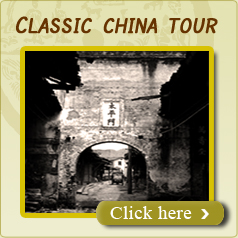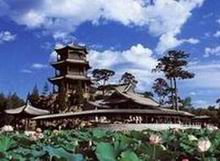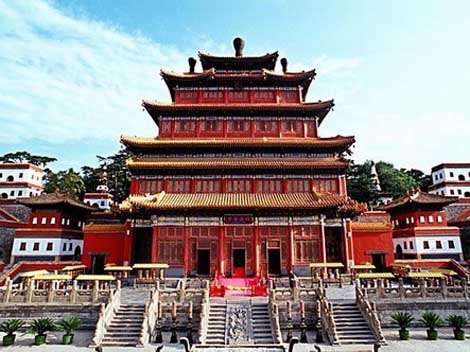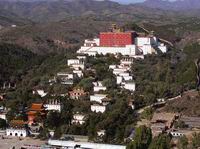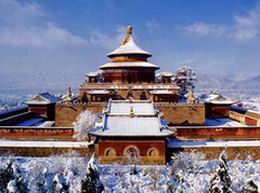Chengde Cuisine
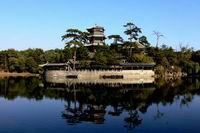
-
City Name:Chengde (Chinese:承德, Pinyin:Chengde)
-
Population :3400,000
-
Area :40,000 square km
-
Overview:Chengde is a famous historical and cultural city in China, located in the northeast of Hebei province, about 220 kilometers from Beijing. It was an imperial resort area in the Qing dynasty (1644-1911).
Overview
Chengde cuisine offers a number of unique dishes, mostly from the Qing Dynasty. Some of the most famous Chengde dishes include: Imperial Court Feast, Chengde Hot Pot, and barbecued meat. Chengde also has a range of famous snacks like dumplings, noodles, quick-fried liver, glutinous rice cakes, glutinous millet cakes, candied haws on sticks and clay-fried oven bread. The candied haws and other candied fruits on sticks are usually only available during the cooler and cold months.
Know More
The staple food of Chengde, is often Mongolian influenced, so that meat dishes are generally of lamp, donkey and horse, rather than pork and chicken, varieties. Mongolian style of food is popular to see in Chengde, where Mongolian restaurants and food stalls are to be found on nearly every street.
Pubang deer meat clusters and the cooked deer meat clusters are quite tasty, and cost only four or five yuan for each cluster. They are well worth trying. In the street south of the Summer Resort, there are many shops featuring local specialities which cater to 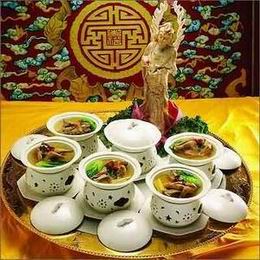 tourists.
tourists.
In the evening, you will find mini-booths selling tangy scented baked corn along Chengde Street.
Must Try
Imperial Court Feast
The dish originates from royal kitchens where especially rich dishes were carefully prepared and cooked exclusively for the royal family. After the fall of the Qing Dynasty (1644-1911), imperial court cuisine became popular among the common people.
The banquet featured many of the world's edible delicacies from land and sea such as famous mushrooms and fungi, choice vegetables, and fruit. Quality was the key selection criteria, and only the best materials were chosen. A case in point is the preparation of the roast suckling pigs. Only piglets weighing between 12 to 13 kilos (28 to 33 pounds) were used. These had to go through a three to four day fattening process where they ate only porridge so that the pork would be tastier. Much importance was placed on the choices of tableware, rituals, and all other forms of table etiquette. Many restaurants serve Court Cuisine in Chengde today, such as Fangshan and Tingliguan restaurants.
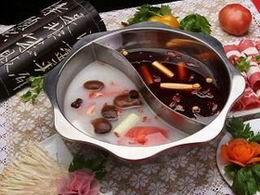 Mutton Hot Pot
Mutton Hot Pot
Mutton Hot Pot, also known as Mongolian hotpot, is inherited from the Mongolian roots of the Qing Dynasty. It is known for its large variety of ingredients and seasonings, like paper-thin mutton slices, sesame jam, leek sprouts, bitter shrimp oil, frozen bean curd, dried rice noodles and fresh vegetables.
When the banquet starts, diners sit around the table and put the mutton slices into the boiling soup, already seasoned to taste. Once the red mutton slices turn light brown or gray, you can eat them along with sesame jams. This cooking process only takes a few seconds, so be careful not to overcook them or it with damage the flavor, tenderness, and nutritional value of the mutton. Hot peppers and pickled garlic can be added to the sesame jam according to the personal taste of the diner.
Donkey-Rolling Roll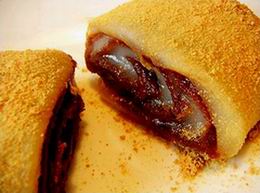
Donkey-Rolling Roll could be found in Chengde more than 200 years ago. It is a long roll with stuffing wrapped in yellow rice. The Roll is served on a bed of yellow beans. The act of turning the roll on the yellow beans is just like a donkey rolling on the ground. That is how the snack got its name.
